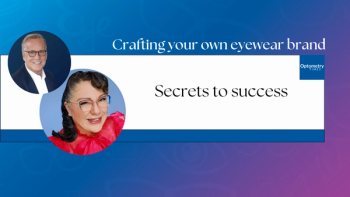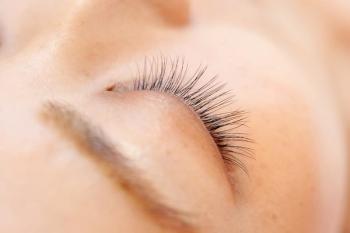
- May/June digital edition 2025
- Volume 17
- Issue 03
The toxic truths in eye health
Prolonged exposure to toxins has detrimental effects on eye health and the body as a whole.
We cannot escape life without daily exposure to the dangerous toxins that surround us. When we consider holistic eye health, we must not forget to include this within our deductive process. Exposure can arise from environmental, behavioral, and chemical factors, all of which have the potential to affect ocular function and overall well-being. Some of them we can control, and others we cannot. Prolonged exposure to toxins, whether from air pollutants, poor dietary choices, or poor personal habits, can have detrimental effects on eye health and the body as a whole. Understanding these toxicities is crucial for the prevention and management of such ocular signs and symptoms that present during an examination.
Environmental toxins
Air pollution, UV radiation, and industrial chemicals significantly affect eye health. According to the CDC Agency for Toxic Substances and Disease Registry, airborne pollutants such as nitrogen dioxide, sulfur dioxide, and particulate matter can lead to oxidative stress, causing inflammation and irritation of the ocular surface, respiratory tract, and mucous membranes. Long-term exposure to such pollutants is linked to chronic conditions such as dry eye syndrome, cataracts, and even age-related macular degeneration (AMD).
UV radiation is a critical environmental toxin. Overexposure to the harmful UV spectrum increases the risk of conditions such as photokeratitis, skin cancer, macular degeneration, cataracts, and pterygium. Proper nutrition and UV protection can prevent structural oxidation of tissue and cumulative damage, which may accelerate these conditions. Nutrition in the form of the carotenoid pigments, lutein and zeaxanthin, is crucial for maintaining retinal integrity in these cases. Vitamins A, C, D, and E also show a positive correlation, reducing inflammation and oxidative stress while promoting healing and structural repair. Consider special care in stressing the importance of UV protection with patients taking certain photosensitizing drugs, such as diuretics, oral contraceptives, antibiotics, antidiabetic medications, and antihypertensive medications.1,2
Dietary and lifestyle factors
Nutrition plays a pivotal role in maintaining ocular wellness. Diets deficient in essential vitamins, such as A, C, and E; carotenoids; and omega-3 fatty acids contribute to weakened ocular defenses. Poor nutrition can then increase susceptibility to conditions such as night blindness, macular degeneration, dry eyes, and cataracts.3 Furthermore, high-sugar diets can exacerbate the development of diabetes and increased inflammation, which can manifest in conditions such as retinopathy, dry eyes, or vision fluctuations.
Smoking is another major contributor to ocular toxicity. Tobacco and marijuana smoke contain thousands of harmful chemicals, including cyanide, which can cause oxidative stress and vascular damage. Smokers are at a significantly higher risk of developing cataracts and AMD compared with nonsmokers.4 Similarly, excessive alcohol consumption contributes to nutrient deficiencies, particularly in vitamin A—crucial for eye health—leading to night blindness.
Let us not forget sleep apnea, which creates a hypoxic environment due to disrupted breathing during sleep, leading to inflammation and risk of developing macular degeneration. Several pathological mechanisms link sleep apnea to vascular risk factors such as cardiac arrhythmias, dysautonomia, insulin resistance, hypertension, dyslipidemia, and inflammation.5
Digital eye strain and blue light exposure
Modern lifestyles that are heavily reliant on digital screens have introduced a new form of toxicity: digital eye strain. Prolonged screen time without breaks leads to symptoms such as blurred vision, headaches, and ocular surface disease due to decreased blinking rates. Additionally, high-energy visible (HEV) blue light emitted by digital devices has raised concerns, albeit inconclusive, about its long-term effects on the retina. However, chronic exposure to blue light may disrupt circadian rhythms, preventing proper melatonin levels and affecting sleep quality and overall wellness.6
- Education to reduce device exposure could include:
- Available lens filtering technologies
- Modifying screen settings
- Increasing a lutein- and zeaxanthin-rich diet
- Breaking more frequently from screens
- Avoiding devices before bedtime
Chemical and pharmaceutical toxins
In 2022, the CDC ranked the top 3 substance toxins—which are determined to pose the most significant potential threat to human health due to their known or suspected toxicity and potential for human exposure—as arsenic, lead, and mercury. These chemicals pose even more danger with accumulative exposure.
The good news is that the body can rid itself of arsenic easily. Toxic levels of arsenic can be found in 10% of public water supplies. Treatment can include methylation with supplementation of folic acid. Lead is considered toxic at any level and can be stored in bone. Working with a physician with supplements to maintain good bone health is recommended in cases of lead poisoning. Mercury is found in silver dental fillings and contaminated fish or near coal-burning or cement-making factories. It is believed that approximately 20% of Hashimoto disease is due to mercury toxicity. Increasing excretion of mercury through a high-fiber diet, along with preventive measures of curcumin and glutathione supplements, is recommended.
Do not overlook the chemicals, such as those found in household cleaning products, pesticides, cosmetics, and solvents, posing a direct risk to eye health. Exposure can often lead to chronic inflammation, hormone disruption, skin irritation, and eventual damage to the ocular surface, eyelid area, and beyond. With a thorough eye examination, a simple review of product use with patients could reveal toxin exposure in the home. Give patients the tools and available apps to return home and conduct further deep dives, allowing them to discover potential culprits causing frustrating eye disease uncovered during an examination.
Additionally, long-term use of medications, such as corticosteroids, can pose toxicities leading to increased IOP, raising the risk of glaucoma. Some antihistamines and antidepressants may contribute to dry eye syndrome. Statins, commonly prescribed for high cholesterol, are known to have a high incidence of myopathy. An improvement in symptoms from statin use was shown with supplementation of coenzyme Q10, which is responsible for mitochondria and energy sources.7,8 Other nutrient depletions to watch out for are from proton pump inhibitors prescribed for gastric reflux and stomach ulcers, which can commonly lower serum magnesium and digestive enzyme levels.9 Antibiotics can disrupt the microbiome for 6 months and up to 2 years and require probiotic supplements immediately following completion of the dose. The gut microbiome performs functions of nutrition, metabolism (the result of biochemical activity), and protection (preventing infections or overgrowth of resident species) and is therefore crucial for homeostasis leading to optimal eye health.10
Preventive measures
To mitigate these toxicities, individuals should adopt protective measures such as wearing UV-blocking sunglasses, maintaining a balanced diet rich in antioxidants, and limiting exposure to toxic ingredients in the home. Quality time with patients will help detect and address potential toxic exposures, preserving both eye health and overall wellness.
Looking to the future, the interplay of environmental, lifestyle, and chemical factors underscores the need for proactive, holistic attention to eye care. Recognizing and addressing these toxicities is essential for preventing vision loss and ensuring long-term ocular and systemic health. As eye care professionals, we should strive to connect the dots between vision and lifestyle choices.
References:
Ultra-violet and blue light aggravate macular degeneration. American Macular Degeneration Foundation. Accessed February 21, 2025. https://www.macular.org/about-macular-degeneration/what-is-macular-degeneration/risk-factors/ultra-violet-and-blue-light
Khoo HE, Ng HS, Yap WS, Goh HJH, Yim HS. Nutrients for prevention of macular degeneration and eye-related diseases. Antioxidants (Basel). 2019;8(4):85. doi:10.3390/antiox8040085
Diet and nutrition. American Optometric Association. Accessed February 13, 2025. https://www.aoa.org/healthy-eyes/caring-for-your-eyes/diet-and-nutrition
Lehrer S, Rheinstein PH. Marijuana smoking and cataract. J Fr Ophtalmol. 2022;45(3):267-271. doi:10.1016/j.jfo.2021.12.008
Sharma S, Culebras A. Sleep apnoea and stroke. Stroke Vasc Neurol. 2016;1(4):185-191. doi:10.1136/svn-2016-000038
Blue light has a dark side. Harvard Health Publishing. July 24, 2024. Accessed February 23, 2025. https://www.health.harvard.edu/staying-healthy/blue-light-has-a-dark-side
Tomaszewski M, Stępień KM, Tomaszewska J, Czuczwar SJ. Statin-induced myopathies. Pharmacol Rep. 2011;63(4):859-866. doi:10.1016/s1734-1140(11)70601-6
Qu H, Guo M, Chai H, Wang WT, Gao ZY, Shi DZ. Effects of coenzyme Q10 on statin-induced myopathy: an updated meta-analysis of randomized controlled trials. J Am Heart Assoc. 2018;7(19):e009835. doi:10.1161/JAHA.118.009835
Gröber U. Magnesium and drugs. Int J Mol Sci. 2019;20(9):2094. doi:10.3390/ijms20092094
Ferrer M, Méndez-García C, Rojo D, Barbas C, Moya A. Antibiotic use and microbiome function. Biochem Pharmacol. 2017;134:114-126. doi:10.1016/j.bcp.2016.09.007
Articles in this issue
6 months ago
Taking your OCT outside of the posterior pole6 months ago
What do we lose if we do not value residencies?Newsletter
Want more insights like this? Subscribe to Optometry Times and get clinical pearls and practice tips delivered straight to your inbox.

















































.png)


